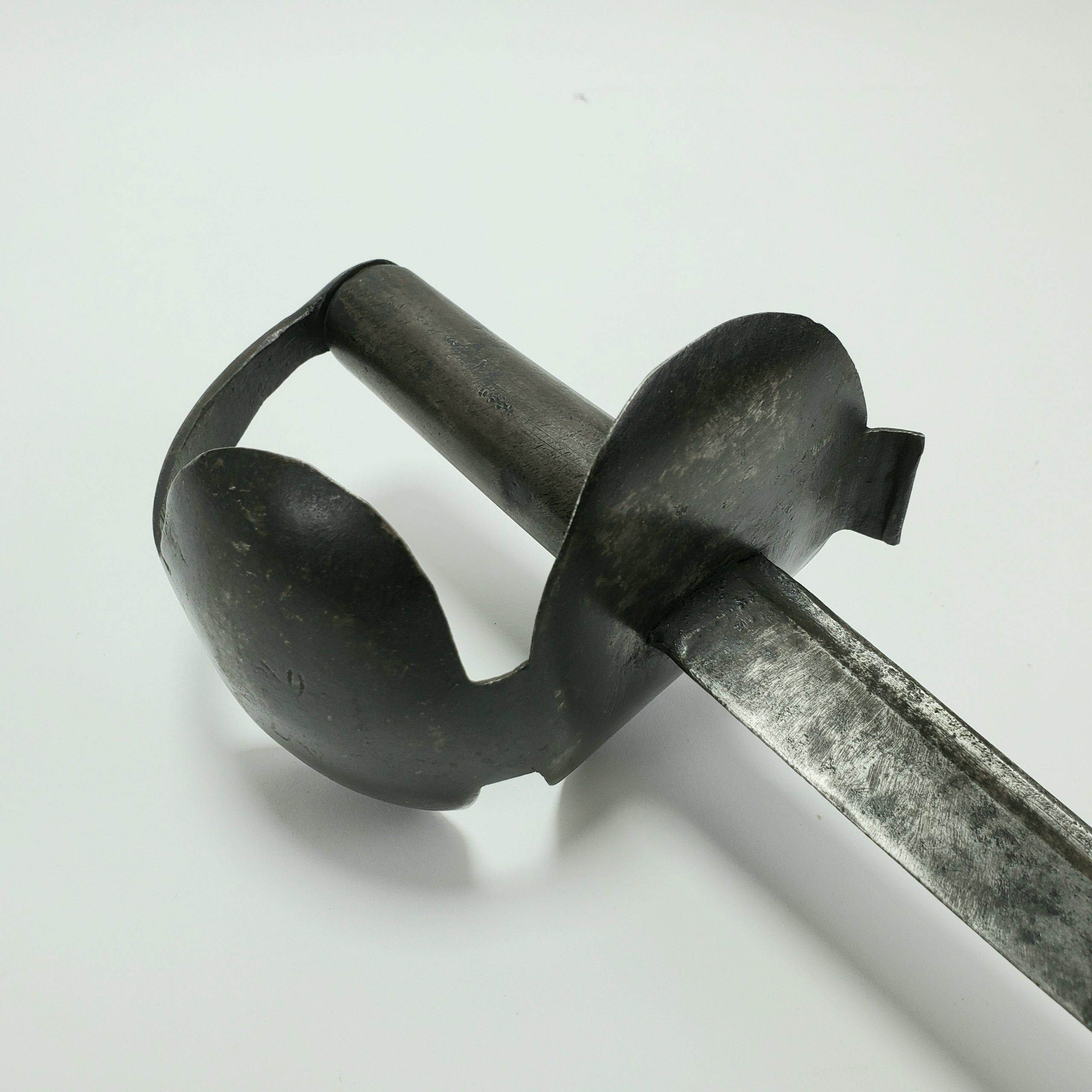One of the iconic swords of the mid to late-18th century is the British sea service cutlass with its distinctive “double disc” thin iron handguard, iron grip, and imposing blade. These were used by British Royal Navy seaman as well as some Provincial militia during the 18th century. In America, we crudely copied this sturdy and serviceable form of sword for our own use well into the 19th century. The British navy also continued the use of this style of sword in various forms well into the early 20th century with minor alterations.

This example was made by British sword maker Samuel Harvey in Birmingham. It is marked on both sides of the blade with his running fox mark and HARVEY in the middle. It has a fairly straight blade with a single fuller near the spine. It is also marked lightly on the knuckle bow disc with a running fox further denoting Harvey manufacture. The iron hilt including the grip was japanned to prevent rust while at sea which gives the sword a robust and utilitarian look instead of the more common fancier looking examples of the period made for use of officers, soldiers, and gentlemen on land.
While these swords were mainly used by sailors, there is a Massachusetts account that after the French and Indian War, some of these were issued to militia for their service. By law, the militia had to be armed and equipped with gun and bayonet, although if you didn’t have a gun that would accept a bayonet, a hand axe or a cutting sword was required. These beefy cutlasses would serve the purpose just fine on land as they did at sea. Crude American copies of this hilt have been found by archaeologists and relic hunters at locations along the Hudson Valley which also show that it was a cheap and fairly simple way to construct a functional sword. I own an example of one of these American-made copies and I have seen others in various collections around the country that show how widespread their use was.
Examples with the surviving leather scabbard are very rare and while it would be fantastic to have, the majority do not so its value is not lost because of this. While the scabbard not being with the earlier swords don’t hurt their value so to speak, later swords of the 19th and 20th century need the scabbard to hold their value.
These swords made for the British tar are very popular with collectors of American Revolutionary War material as well as nautical enthusiasts and as such are greatly sought after by the collectors of historical arms.






